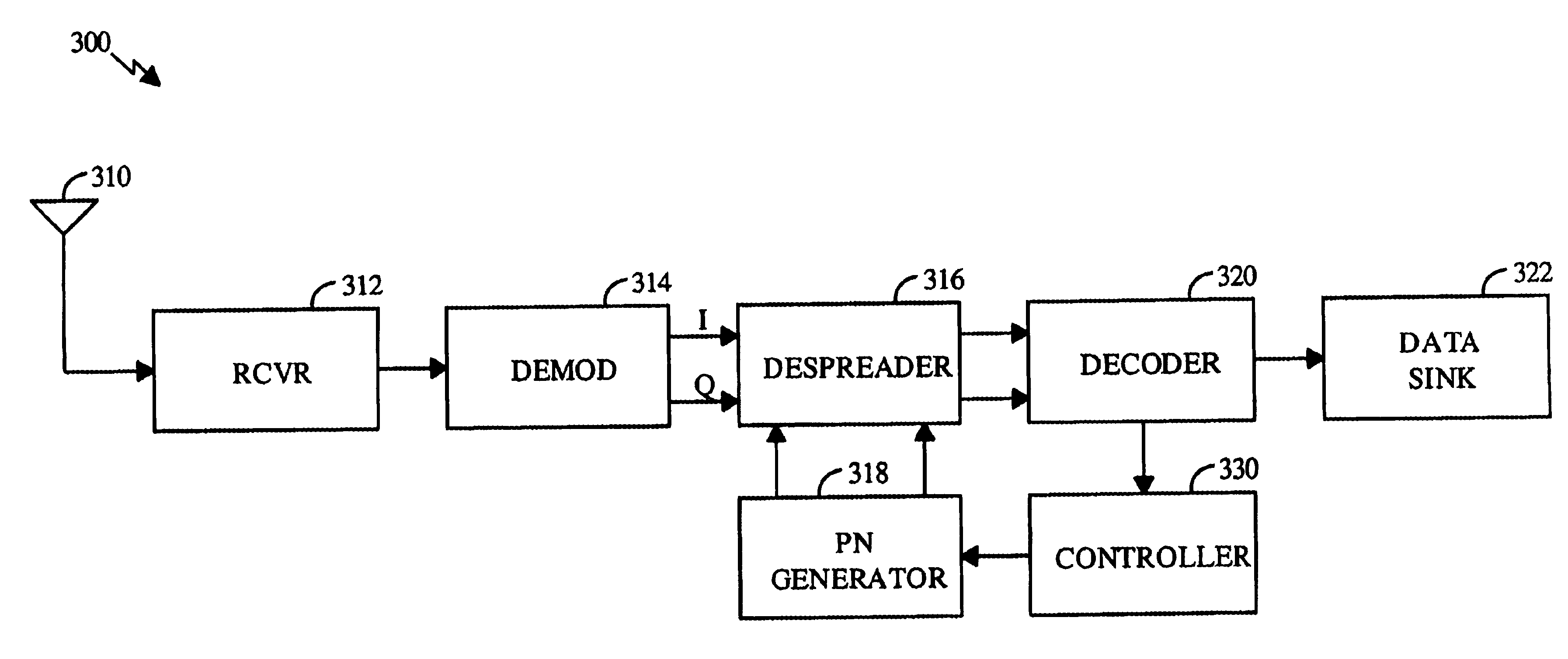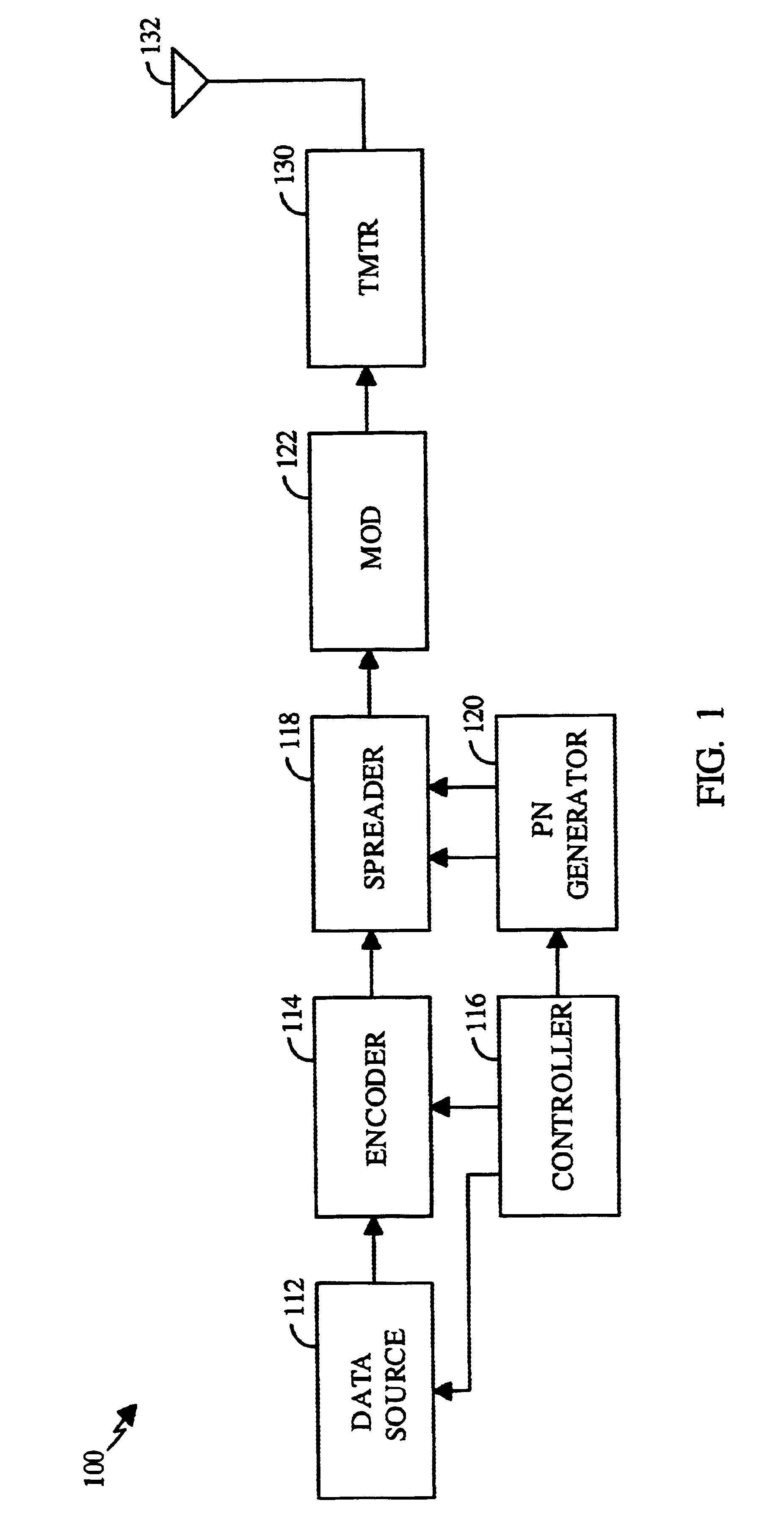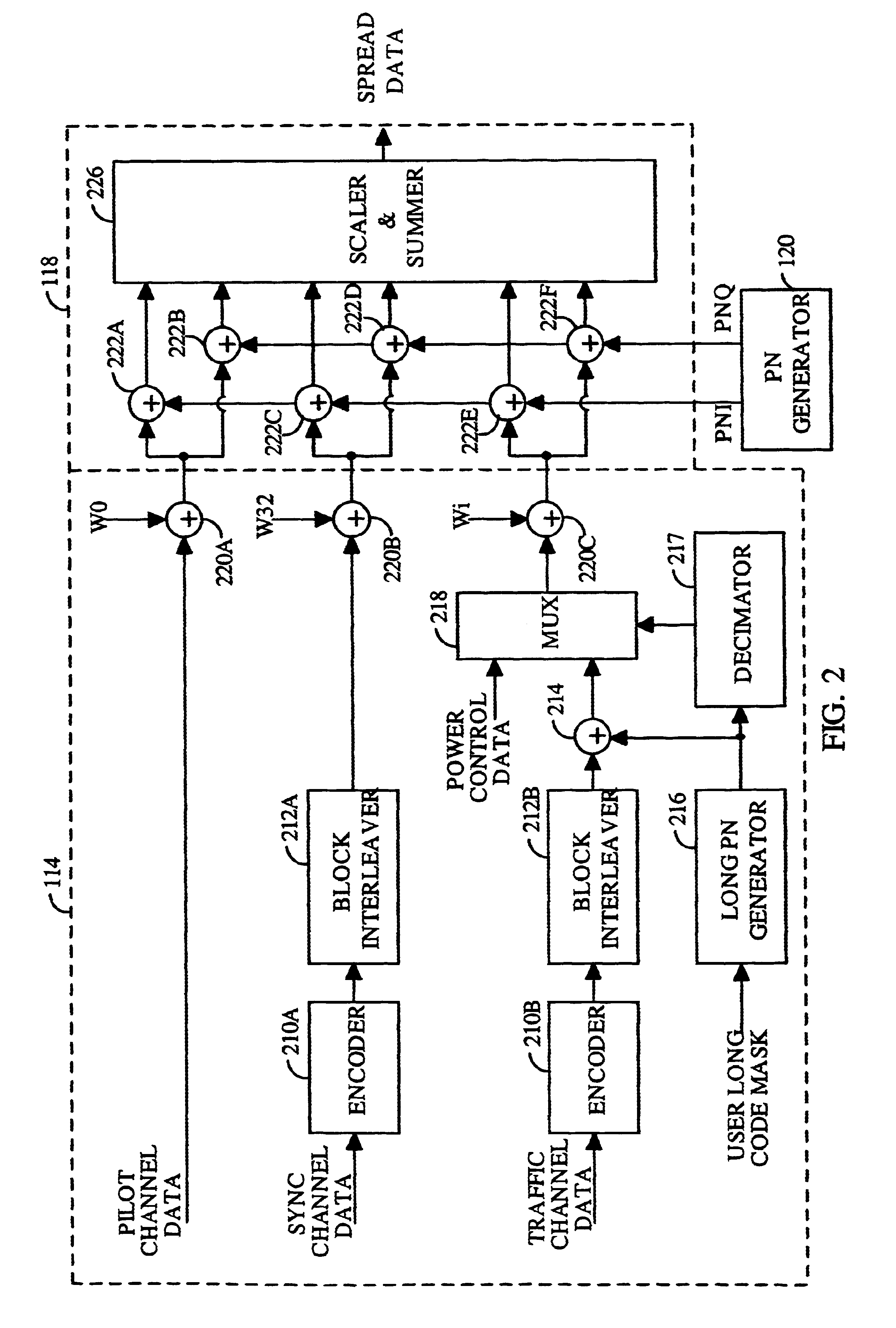PN generators for spread spectrum communications systems
a technology of spread spectrum communication system and generator, which is applied in the direction of pulse generator, pulse technique, instrument, etc., can solve the problems of prolonging the acquisition process and mobile stations may not be able to easily distinguish pilot signals from these systems
- Summary
- Abstract
- Description
- Claims
- Application Information
AI Technical Summary
Problems solved by technology
Method used
Image
Examples
Embodiment Construction
FIG. 1 shows a block diagram of a specific embodiment of a transmitter unit 100 that generates a spread spectrum signal in a CDMA communications system. Within transmitter unit 100, data from a data source 112 is partitioned into data frames and provided to an encoder 114. A controller 116 can direct the partition and transfer of data from data source 112, and can also provide additional data and messages to encoder 114. Encoder 114 encodes the received data and messages in accordance with a particular encoding format and provides the encoded data to a spreader 118. Spreader 118 also receives a set of pseudo-random noise (PN) sequences from a PN generator 120, and spectrally spreads the encoded data and messages with the PN sequences to generate spread data. The spread data is provided to a modulator (MOD) 122 that modulates the data with an intermediate frequency carrier signal (IF_LO) in accordance with a particular modulation format (e.g., QPSK or OQPSK) to generate an IF modulat...
PUM
 Login to View More
Login to View More Abstract
Description
Claims
Application Information
 Login to View More
Login to View More - R&D
- Intellectual Property
- Life Sciences
- Materials
- Tech Scout
- Unparalleled Data Quality
- Higher Quality Content
- 60% Fewer Hallucinations
Browse by: Latest US Patents, China's latest patents, Technical Efficacy Thesaurus, Application Domain, Technology Topic, Popular Technical Reports.
© 2025 PatSnap. All rights reserved.Legal|Privacy policy|Modern Slavery Act Transparency Statement|Sitemap|About US| Contact US: help@patsnap.com



